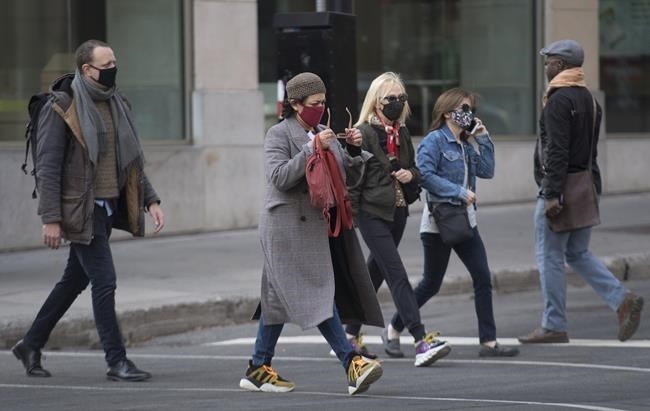The number of COVID-19 cases continued to soar in parts of Canada on Saturday, with Alberta and Ontario reaching new daily highs and British Columbia imposing significant new restrictions in the most populous part of the province.
Multiple spikes raised the national tally of confirmed cases to 259,136. That was largely driven by a record daily number of 1,132 new cases in Ontario, where officials also announced 11 new deaths linked to the novel coronavirus.
Alberta, too, saw a single-day high on Saturday, recording 919 new cases of the virus.
The government's website noted that due to technical issues, the numbers were preliminary and subject to reconciliation.
B.C. recorded 567 cases on Saturday. That figure, along with the 589 diagnoses documented on Friday, represent the highest case counts seen in the province to date.
Provincial health officer Dr. Bonnie Henry said linear case growth turned exponential in the past two weeks in the Lower Mainland. She introduced new rules covering a two-week period for residents in two Metro Vancouver health regions.
The new restrictions prohibit residents from making social visits to other homes, halt indoor group fitness activities like yoga and spin classes, and "strongly discourage" non-essential travel to and from the region.
"This will give us a chance to stop the transmission, to have a break in that rising transmission rate we are seeing," Henry said during a rare Saturday briefing.
Manitoba, meanwhile, recorded 271 new cases of COVID-19 on Saturday as officials reported that seven residents of Maples Personal Care Home who had the virus died over the course of just two days.
That brings the death toll at the Winnipeg long-term care facility to 22.
Winnipeg moved into the province's red zone earlier this week and the southern health region is set to go red on Monday.
In Quebec, 1,234 new cases and 29 more deaths were linked to the virus, with the Health Department saying 11 of those deaths came in the past 24 hours.
Canada's chief public health officer Dr. Theresa Tam noted Saturday that several regions are "experiencing accelerated growth" and urged Canadians to step up containment efforts.
She pointed to a growing number of people suffering severe COVID-19 illness as a worrisome trend that could further burden hospitals in the coming weeks, and warned that could be especially problematic as flu season intensifies.
"We need to retake the lead on COVID-19, by each reducing our close contacts to the best of our ability and employing key public health practices consistently and with precision," Tam said in a statement.
A new colour-coded assessment system launched in Ontario, where hot spots included Toronto, with 336 new infections, and Peel Region, with 258 new cases. Ottawa reported 78 new cases while Hamilton reported 55.
Only Peel Region, which has seen rising cases in recent weeks, was deemed a red zone, while other hot spots such as York Region and Ottawa were labelled orange.
But that region rejected the restrictions as too lax, instead imposing far stricter guidelines that include a prohibition on interacting with people outside one's own household.
Saturday's daily case count surpassed the previous provincial daily high of 1,050 cases reported on Tuesday.
In Quebec, Premier Francois Legault urged residents Saturday to maintain efforts to keep COVID-19 at bay this winter. In an open letter, Legault thanked Quebecers for showing solidarity and expressed hope that grandparents will be able to see their grandchildren at Christmas.
Quebec officials have said they are especially concerned about Saguenay, north of Quebec City, and Lanaudiere, north of Montreal -- regions Legault has dubbed "the worst" in the province on a per-capita basis.
This report by The Canadian Press was first published Nov. 7, 2020.
The Canadian Press

